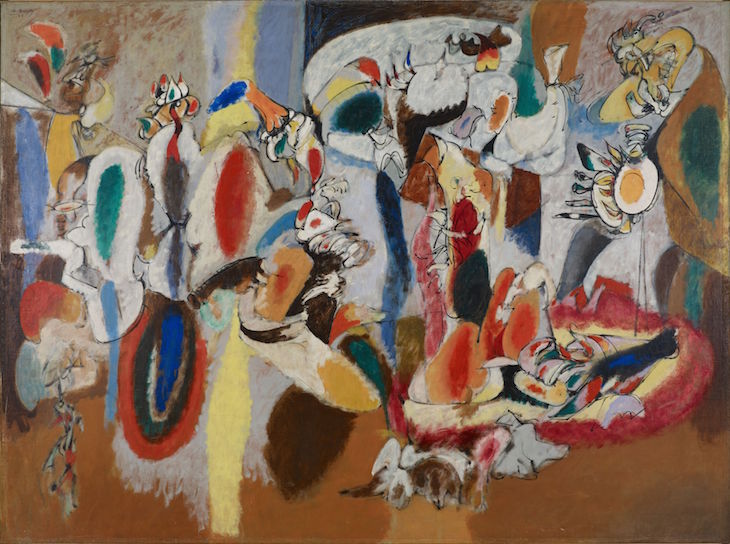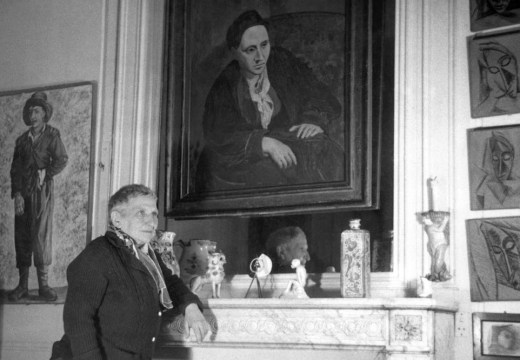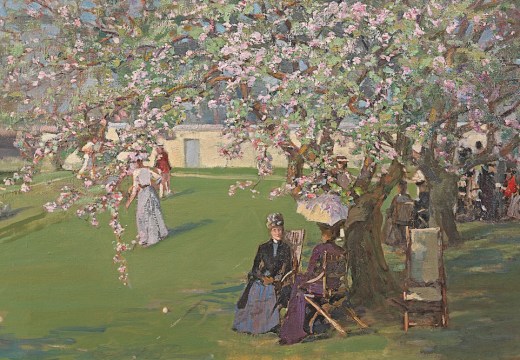With his distinct take on Surrealism, the Armenian-born painter Arshile Gorky proved the most significant precursor to the New York School. His first full survey in Italy follows the artist from his early still lifes and portraits, which riffed on the work of other painters like Cézanne and Picasso, to the biomorphic abstractions for which he is best known. Find out more from Ca’ Pesaro’s website.
Preview the exhibition below | View Apollo’s Art Diary here

Self-portrait (c. 1937), Arshile Gorky. Photo: Constance Mensh for the Philadelphia Museum of Art
Vostanik Adoyan was barely ten years old when the Armenian genocide forced his family from their home in 1915; four years later, his mother died of starvation in his arms. He reached the US in 1920, settling in New York in 1924; the young painter concealed all sign of his origins, changing his name in the pretence that he was a Russian noble, and a relative of Russian poet Maxim Gorky. New York gave him a new identity – as well as the opportunity to study the work of the European masters in the collections of museums including the Met, the Frick and MoMA when it opened in 1929. This self-portrait reveals the influence of Cézanne.

Landscape-Table (1945), Arshile Gorky
Over time Gorky’s work became increasingly abstract, characterised by a fluid line and vibrant colours. Loosening up his paint with turpentine, he placed increased emphasis on the painting process itself – an approach that had a huge influence on his close friend Willem de Kooning, and on Jackson Pollock.

The Liver is the Cock’s Comb (1944), Arshile Gorky.
Unlike that of Pollock or de Kooning, Gorky’s work never tipped over into pure abstraction; surreal forms, hovering between the comic and tragic, continued to make their way into his compositions. Look out here for the rooster-headed figure on the right of this famous painting, and the ominous white skull that looms behind. André Breton was enchanted by Gorky’s work when he arrived in New York in the 1940s, but Gorky remained coy about his association with Surrealism, arguing that the forms in his works did not spring from the unconscious but from the organic world.

Pastoral (c. 1947), Arshile Gorky
Gorky experienced a chain of traumatic events in his final years. His studio burned to the ground in 1946, destroying a great number of paintings; weeks later he was diagnosed with cancer. Soon afterwards he discovered his wife Agnes was having an affair with friend and rival painter Roberto Matta. His paintings became increasingly spare and tonally muted. In 1948, he was left unable to work after breaking his neck in a car accident; less than a month later he took his life at his country home in Connecticut.











![Masterpiece [Re]discovery 2022. Photo: Ben Fisher Photography, courtesy of Masterpiece London](https://apollo-magazine.com/wp-content/uploads/2022/07/MPL2022_4263.jpg)
Sitting pretty – the world’s best museum benches